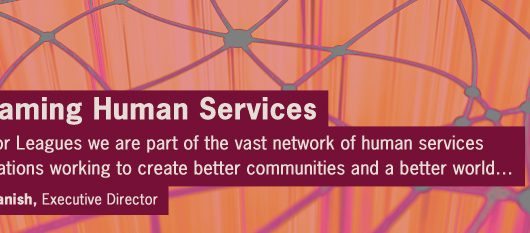A Q&A with Chief Officer for Strategic Initiatives Anne Dalton, who has spent the last 27 years in a variety of roles at AJLI, the last few of them largely on the road or phoning in from her home office outside Portland, Maine.
What does a typical day in your work for AJLI look like?
What is so attractive to me about my job is that there is no typical day. There’s a lot of variety and it’s very personally motivating because I get to learn about so many new things. I might be developing a new workshop or tweaking a training presentation I’ve just given, keeping up with what’s going on in the nonprofit sector via articles and blog postings, or consulting to groups currently in the midst of the affiliation process.
As the guru of all things governance and management, how do you explain the difference between the two?
Governance, to me, is most importantly the process by which an organization sets a future course for itself that will allow it to realize everything it possibly can within its mission and vision. I think the most important role of a board is to set powerful strategic goals that define what results will be accomplished. Put another way, what impact the League will have in its community. Management, on the other hand, has the equally important job of executing to the goals and ensuring there are programs and practices in place to implement the plan to its highest potential. Historically, there has been a lot of overlap between the two, with boards often getting too caught up in day-to-day management. The achievable ideal is a highly strategic board partnered with an equally effective management team.
What makes you so optimistic about the future of The Junior League?
It’s a combination. First, the Roadmap has allowed us to get all the data on the table, systematically and dispassionately so that we’ve got a clear picture of reality, rather than just an unconfirmed, anecdotal sense of what is and isn’t working. Secondly, we have successfully engaged many parts of the organization so that we are truly thinking collaboratively and tapping into so much more of our collective wisdom about what our future ought to look like. I think it’s quite fitting that Mary Harriman’s dream of The Junior League was that it be collaborative with its community and it is through powerful collaboration that we now chart our second century.
As both a longtime League member and member of the AJLI staff, do you still see something compelling in what it offers to women, that’s different from other organizations out there?
There’s something to be said for timing. In this moment I think there’s a hunger out in the world for things to be happening at the community level. There’s a hunger among communities for programs that make an impact and a hunger among women for meaningful volunteer leadership experiences. And we know how to deliver on that promise — we’ve created that kind of opportunity from the earliest moments in our history. But we’ve got to remember that we’re a 109-year-old organization; we must be purposefully patient as we continue to evolve.
When you’re not keeping up on your reading or leading a new training session, where might we find you and what might you be doing?
It’s likely you’d find me wandering through a nursery because I am very much into container gardening these days, both inside and out. I find flowers incredibly soothing and I love to play with contrasts – blue lobelia with orange-yellow coreopsis and gerbera daisies. I also find that music, like flowers, brings harmony to my life — my mother was a harpist with the Cleveland Orchestra where I grew up. And I love to read. My air travel gives me a chance to crack three or four books at one time — I’m desperate to see what author Jhumpa Lahiri is coming out with next. And of course I love keeping up with my granddaughters out in California – Facebook is great for that.

